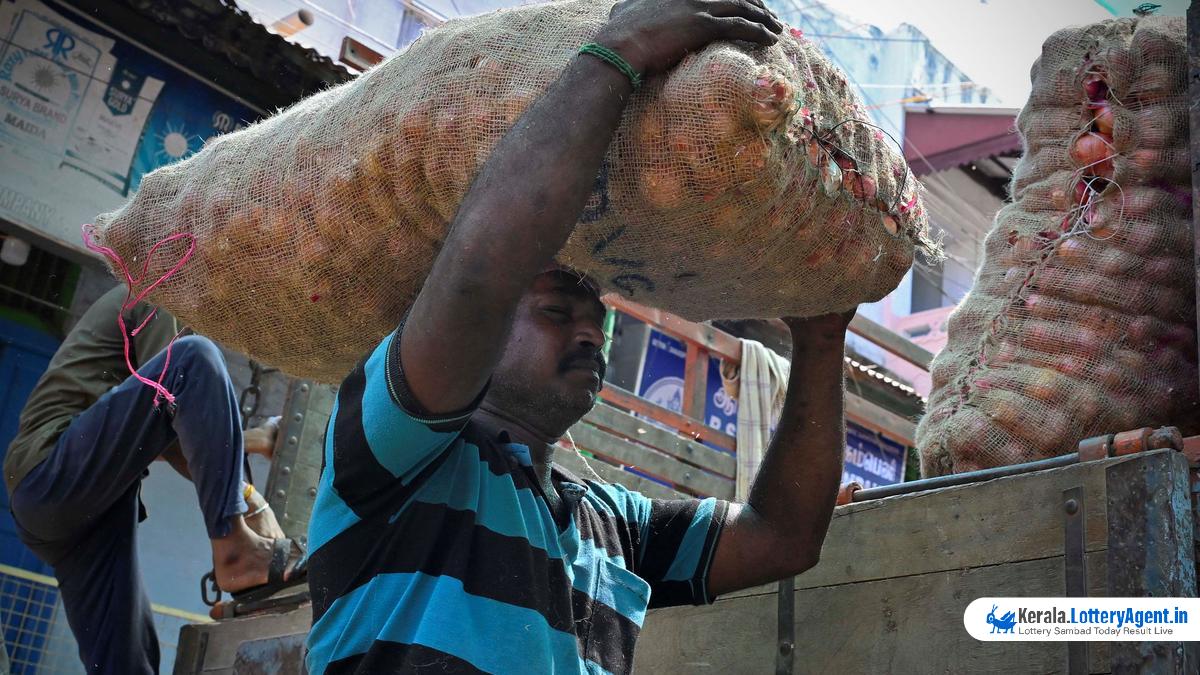
In a strategic move that coincides with upcoming Lok Sabha elections, the Central Government has modified its stance on onion exports, which had been under a blanket ban since early December 2023 due to soaring food inflation and concerns regarding domestic supply. The government has announced the lifting of this ban, but the relief comes with specific riders aimed at ensuring a balance between domestic demand and export policy.
The current decision allows for the resumption of outbound shipments of onions, albeit under a limited framework. Exporters will now have to adhere to a minimum export price (MEP) set at $550 per tonne and an export duty of 40%. This effectively raises the lowest price at which Indian onions can be sold internationally to $770 per tonne, factoring in the duty imposed.
This pivot in the export policy arrives days before key elections in the onion-producing states of Gujarat and Maharashtra. Political opposition in these regions has been vocal, particularly after a decision made on April 25th that permitted the export of 2000 tonnes of white onions specifically from Gujarat, which sparked controversy and accusations of regional bias by Opposition leaders. They claimed that the policy discriminated against Maharashtra’s red onion farmers by continuing to bar their exports.
The global market for onions has witnessed extreme price hikes in recent months, fuelled by export bans from major contributors, including India, Pakistan, and Egypt. However, with Egypt reporting a threefold increase in onion production and subsequently lifting their bans, along with Pakistan relaxing export restrictions, the international prices have been under flux.
Government officials, particularly Consumer Affairs Secretary Nidhi Khare, have emphasized that the primary goal remains to protect the interests of Indian consumers while also considering the welfare of farmers. Post extensive market evaluations, including a visit to Lasalgoan Mandi in Maharashtra, which is noted as the largest wholesale onion market in the country, officials discerned a stable price of ₹15 per kg since April and a need to mitigate storage losses inherent to the perishable nature of onions.
The newly sanctioned export terms were formalized through consecutive notifications issued by the Ministries of Finance and Commerce late on Friday and in the early hours of Saturday. This revised regulation will remain in force until the government determines further adjustments are necessary.
The authorities are keen to highlight that this move to allow exports comes after achieving domestic price stabilization. The halt on exports was an emergency measure in response to an approximate 20% decline in Kharif and late Kharif onion production. The embargo was essential to ensure an adequate domestic supply until the Rabi 2024 crop, which is currently estimated to be about 191 lakh tonnes. With the normal monthly consumption hovering at around 17 lakh tonnes, the expectation is that the Rabi harvest will sufficiently meet domestic needs until the following Kharif cropping season.
Additionally, meteorological forecasts of an above-normal monsoon bolster confidence in favorable agricultural conditions for the upcoming Kharif cycle in 2024-2025, which should likewise enhance future domestic and export capacities.
In an attempt to placate concerns raised by Maharashtra’s onion farmers subsequent to the sanctioning of white onion exports from Gujarat, the Central Government announced on April 27th, two days after that exception, that it had authorized the export of over 99,000 tonnes of onions to certain countries. However, stakeholders in Maharashtra argue that these figures reference quotas already allocated to six countries over recent months via the National Cooperative Exports Limited (NCEL), declaring that less than 10% of this allowance has been utilized so far. They further indicated that the white onion export privilege was not contingent upon NCEL’s participation nor restricted to any specific receiving country, contrasting with the previous allotments.
This maneuver by the Centre, under the cloak of managing resources effectively, is also viewed through a political lens, as it plays a significant role in influencing the agriculturally-driven electorate in key constituencies right before major elections.













